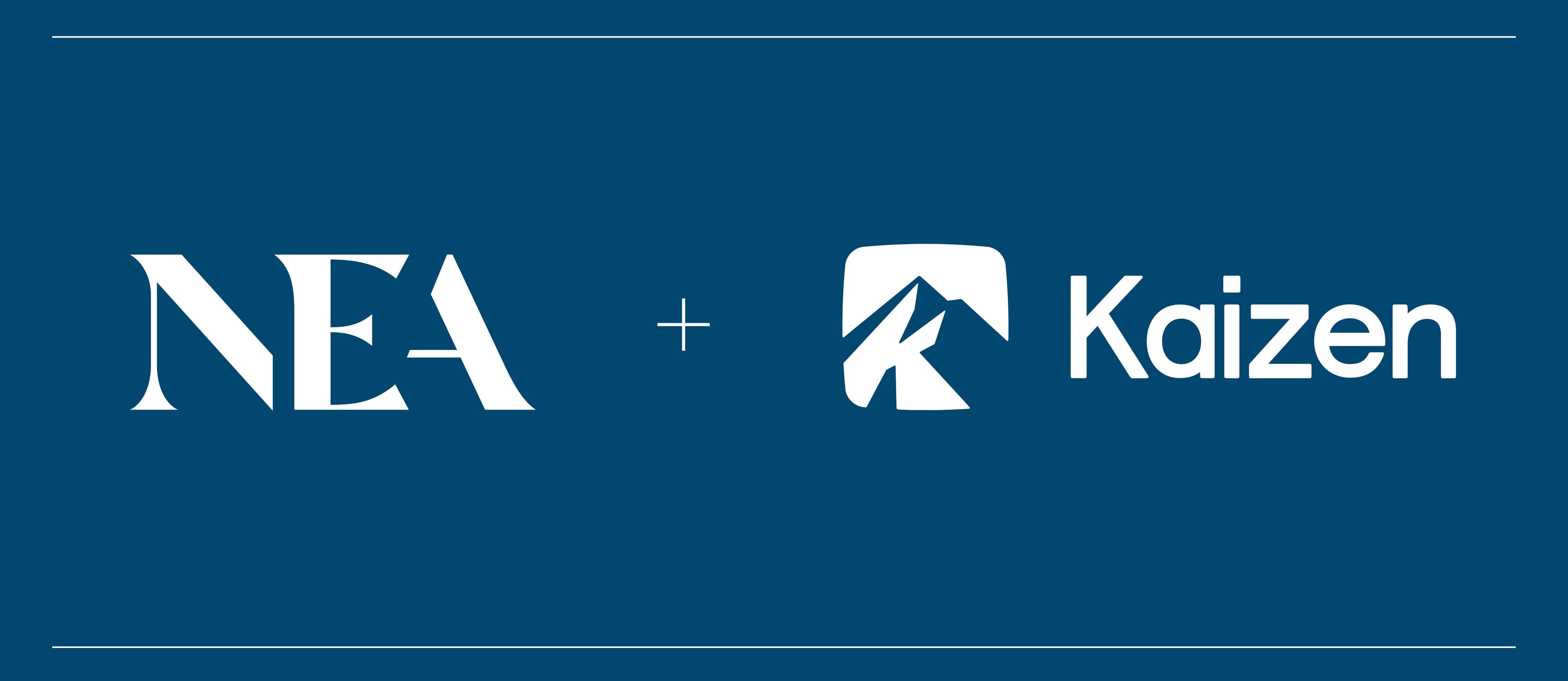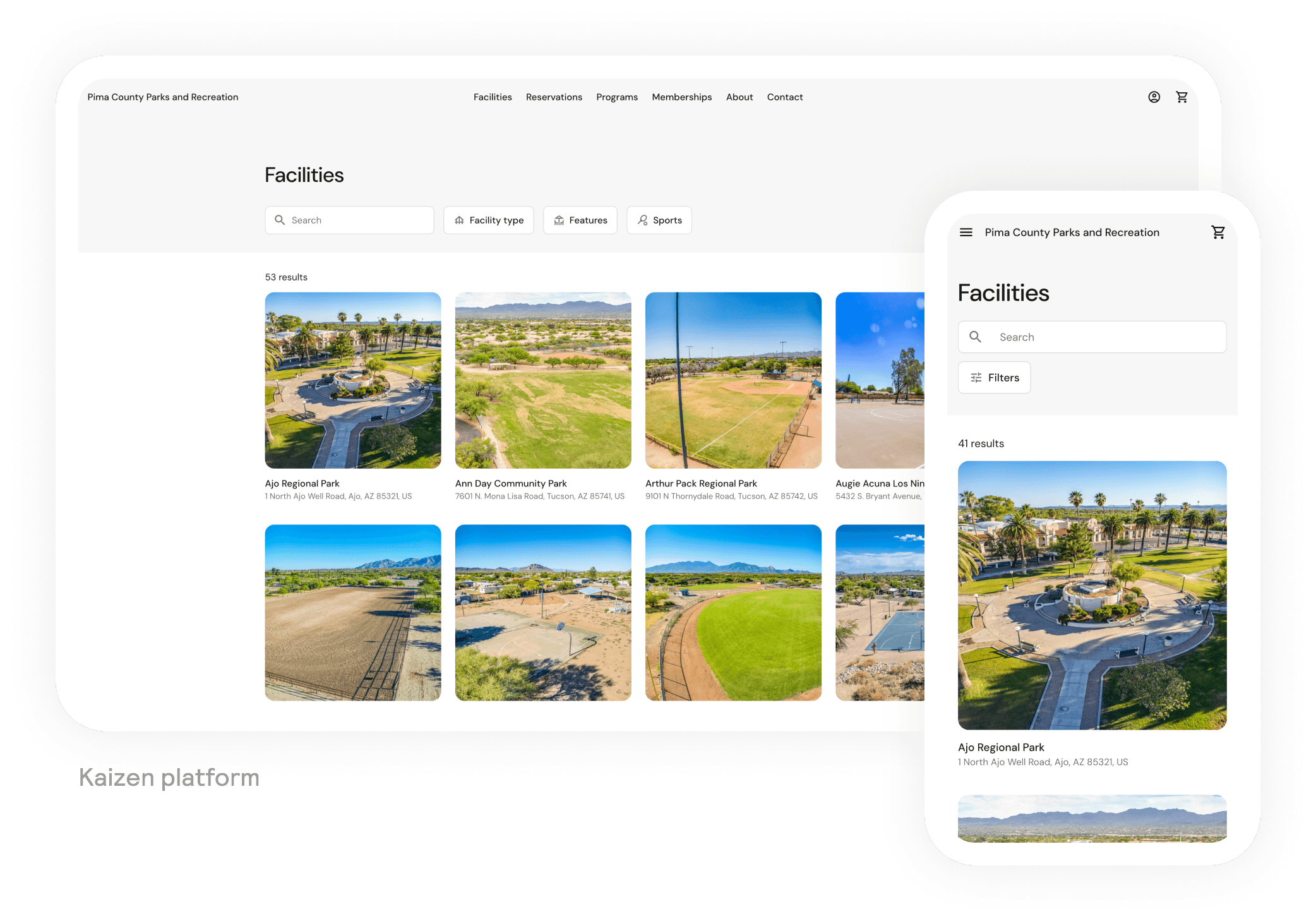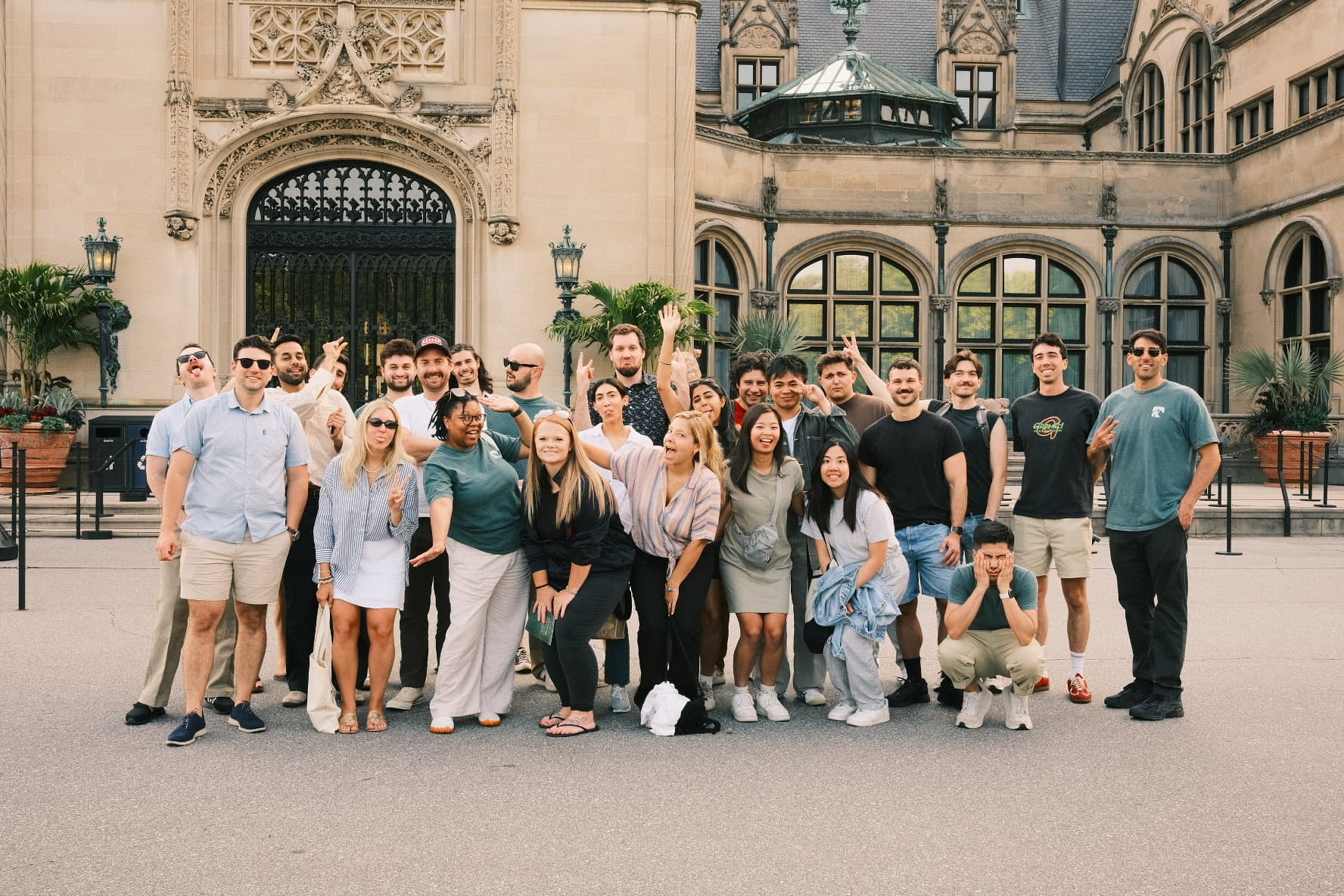Blog
How Kaizen is Designing the Way to Better Public Services
by Andrew Schoen, Mustafa Neemuchwala, Hilarie Koplow-McAdams and Ayush GoradiaOct 30, 2025

When was the last time you had a delightful experience booking a DMV appointment, paying for parking, or reserving a campsite? The answer might be never—or at least not frequently—based on a 2025 Qualtrics survey revealing that only 60% of Americans are satisfied with digital government services1.
Despite the U.S.’s longstanding leading position in technology spend, the operating systems powering local, state, and federal governments have lagged behind, burdened by ever-compounding technical debt. Maintaining these sprawling systems is extremely costly, with the federal government’s FY 2025 civilian IT budget eclipsing $75 billion alone2.
Beyond reconciling increasing IT costs with tightening budgets, the U.S.’ 90,000+ municipal governments struggle to deliver modern, user-friendly experiences to residents3. Kaizen wants to change this. From the DMVs to parks and recreation departments Kaizen serves today, employees spend much of their time manually updating legacy systems unequipped for automation. Parks and recreation staff, in particular, spend upwards of two thirds of their time on manual administrative and operational tasks, delaying service and limiting time spent with residents3. The growing complexity of legacy systems leaves agencies in a reactive state, struggling to meet resident expectations in a digital-first world.
Government Digital Systems: A Fragile Web of Vendors
The above issues largely stem from traditional government procurement processes. Many jurisdictions’ RFP processes require nebulous regulatory clearances and lengthy review cycles that ultimately favor large incumbents that can endure long sales cycles and build expansive bespoke platforms. As service scopes balloon, vendors gain near‑permanent footholds as agencies become absorbed with triaging the inflexibilities of their IT stack.
Chronic delays and cost overruns often force government agencies to choose between incurring even greater expenses to start anew or paying far more than planned to finish troubled projects. The examples of three contracts with Cook County, IL and the Illinois Supreme Court highlight these inefficiencies at scale. In 2015, Cook County embarked on a massive project to modernize its property records & tax billing and Circuit Court clerk systems, alongside building a dashboard for the Illinois Supreme Court to manage state and county appellate cases. The initial project costs were estimated at ~$75M with a 3-5 year completion window4.
In reality, these projects have been mired in delays and faulty execution. The property records system only went live in April 2025, 5+ years past its initial deadline and the Supreme Court dashboard is now in its 9th year of development. Worse, project costs have ballooned in lockstep with these delays; government agencies have approved ~$185M in expenditures on these three projects to-date, ~2.5x initial estimates. Beyond payments to the prime software vendors on these modernization contracts, the involved agencies have spent an additional ~$81M, >7x initial estimates, on oversight consultants and maintaining legacy mainframes that were supposed to be deprecated years ago4.
Alongside runaway costs, agencies face immense pressure from frequent service downtime, growing cybersecurity vulnerability, manual maintenance workflows, and dissatisfying UI/UX. Budget-constrained agencies can’t afford to patch unwieldy legacy systems indefinitely; a fully-reimagined government software stack is needed, from backend management to public-facing websites.
Fortunately, momentum for change is building. In August 2025, a federal Executive Order commissioned a new National Design Studio and dedicated $10 billion to address the nation’s “digital potholes,” signaling a growing commitment to modernizing public infrastructure in the United States5.
Enter Kaizen
Kaizen is tackling the above issues by building modern, user-friendly digital platforms for residents to engage with their communities. Kaizen specializes in enabling smoother resident experiences across local and state recreation, permitting and licensing, and special event ticketing. Alongside these public-facing interfaces, Kaizen has built an extensive administrative backend that automates much of the complexities faced by staff in managing reservations, events, pricing, inventory, member oversight, and analytics.

Kaizen is already working with some of the most forward-thinking agencies and communities in the United States, including Vail Recreation District (CO), Maryland State Parks (MD), Maricopa County (largest County in AZ), Pima County (2nd largest County in AZ), Suffolk County (NY), Pinellas County (FL), and Cherokee Nation (largest tribal organization in the US). In these locales, Kaizen is delivering accessible digital experiences residents trust and staff can manage at scale.
Kaizen's technology is already deeply resonating with parks & recreation agencies, and this is only the first chapter of a much larger story. The foundational technology Kaizen has built for payments, registrations, memberships, and reservations use cases is applicable across all levels of government, with the potential to transform services from DMVs to utility services to courthouses. Kaizen has put in the upfront work of building these tools for modularity, scale, and compliance, even for the most rigorous use cases in government. Kaizen has the vision, technology, and relationships to reimagine government services at the highest levels—no more entangled webs of vendors delivering overbudget, underperforming solutions, just Kaizen's turnkey suite of compliant, scalable technology that delights agencies and end users alike.
Beyond their technological prowess, we're particularly impressed and excited by Kaizen's momentum at all levels of government. Most vendors entrench themselves in one level of government while Kaizen is positioning itself to succeed at the municipal, state, and federal levels. The team is already winning RFPs with municipalities and states, and is poised to compete fiercely for federal contracts with its dynamic product suite.
A Purpose-Built Team

Over the past year, we’ve had the opportunity to get to know the Kaizen team and see their impressive momentum firsthand. CEO and Co-Founder Nikhil Reddy was one of the first 100 employees at Anduril, where he built user interfaces for complex national security applications, working directly with DoD operators. COO and Co-Founder KJ Shah brings experience from Flockjay and William Blair, understanding both go-to-market strategy and operational excellence. The team's experience with government institutions, combined with their background building software at scale, makes them uniquely positioned to modernize this critical sector, and we couldn’t be more excited to back them.
Why We Invested
Nationwide tailwinds: Recent federal attention and funding unlocks are catalyzing agencies at all levels re-evaluate and modernize their IT stacks
Customer love: Kaizen is executing with incredible product velocity and customer passion offering 24/7 support, resulting in a level of customer love that’s rarely seen in government services
Paul Peditto, Maryland DNR’s Assistant Secretary of Land Resources says it best: “As a career public servant with 30 years at the Department of Natural Resources, I can say without hesitation that this initiative is one of the most meaningful changes we’ve implemented to expand and safeguard public access while ensuring equitable access to our public lands” — a testament to how transformative thoughtful technology can be when it’s designed around residents, not bureaucracy.
From helping build internet‑scale infrastructure to backing AI‑native software, NEA partners with mission‑driven founders building enduring companies. We’re proud to support Nikhil, KJ, and the Kaizen team as they scale the defining platform for municipal services in the modern era.
See Kaizen in action → Schedule a demo here!
Join the team → Kaizen is hiring!

Sources
https://www.qualtrics.com/articles/experience-management/government-experience-trends/
https://www.chicagotribune.com/2025/04/06/the-265-million-dollar-tech-bill/
https://www.whitehouse.gov/presidential-actions/2025/08/improving-our-nation-through-better-design/
Disclaimer
The information provided in this blog post is for educational and informational purposes only and is not intended to be investment advice, or recommendation, or as an offer to sell or a solicitation of an offer to buy an interest in any fund or investment vehicle managed by NEA or any other NEA entity. New Enterprise Associates (NEA) is a registered investment adviser with the Securities and Exchange Commission (SEC). However, nothing in this post should be interpreted to suggest that the SEC has endorsed or approved the contents of this post. NEA has no obligation to update, modify, or amend the contents of this post nor to notify readers in the event that any information, opinion, forecast or estimate changes or subsequently becomes inaccurate or outdated. In addition, certain information contained herein has been obtained from third-party sources and has not been independently verified by NEA. Any statements made by founders, investors, portfolio companies, or others in the post or on other third-party websites referencing this post are their own, and are not intended to be an endorsement of the investment advisory services offered by NEA.
NEA makes no assurance that investment results obtained historically can be obtained in the future, or that any investments managed by NEA will be profitable. To the extent the content in this post discusses hypotheticals, projections, or forecasts to illustrate a view, such views may not have been verified or adopted by NEA, nor has NEA tested the validity of the assumptions that underline such opinions. Readers of the information contained herein should consult their own legal, tax, and financial advisers because the contents are not intended by NEA to be used as part of the investment decision making process related to any investment managed by NEA.




